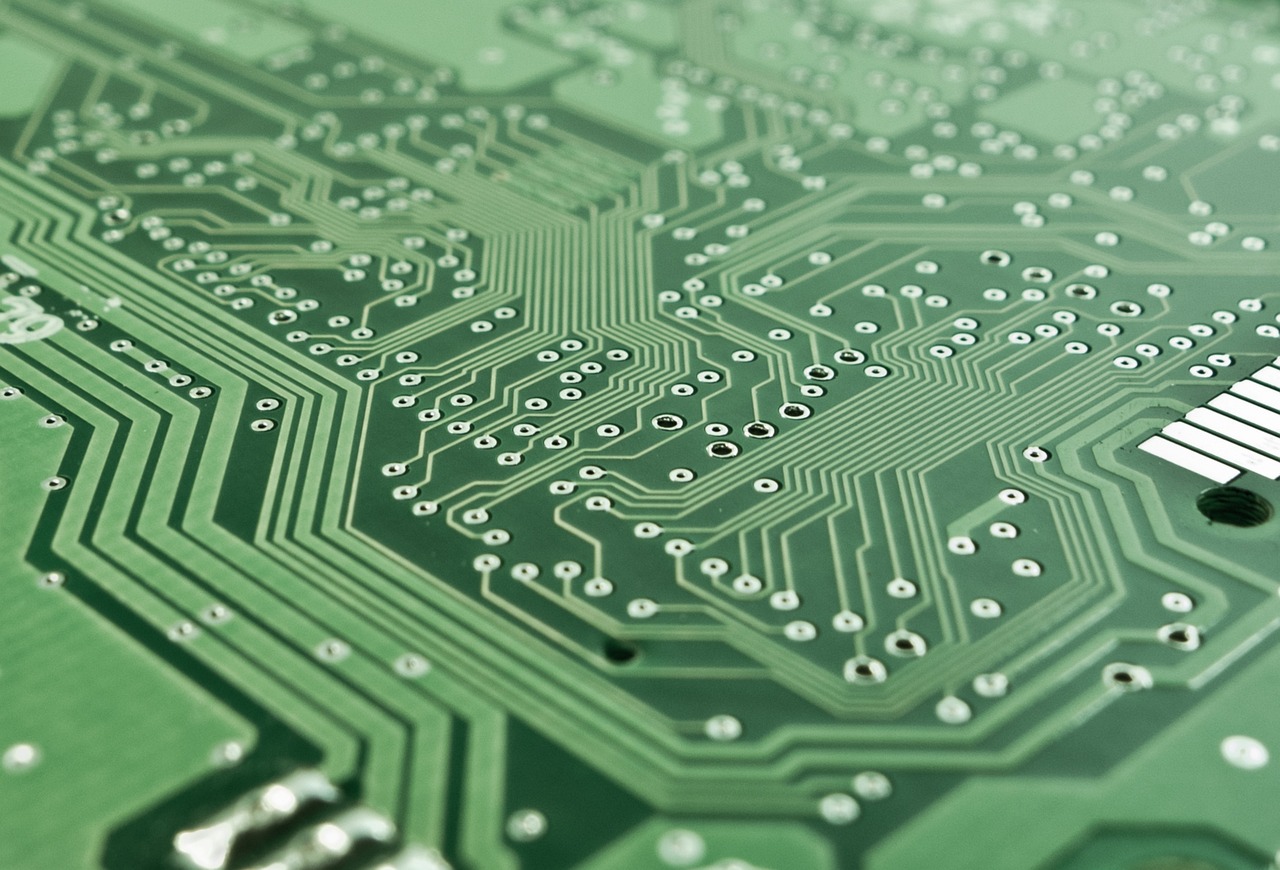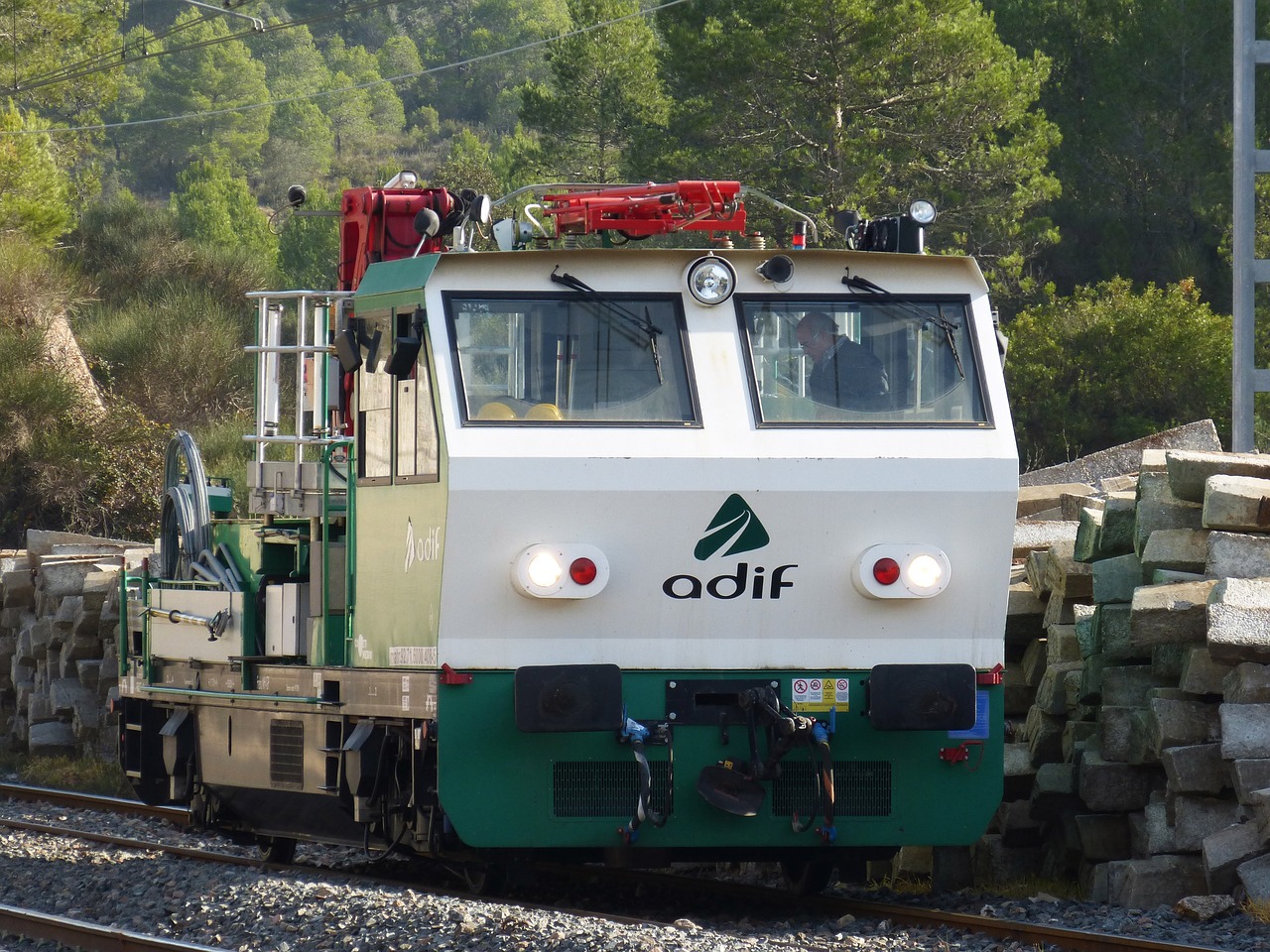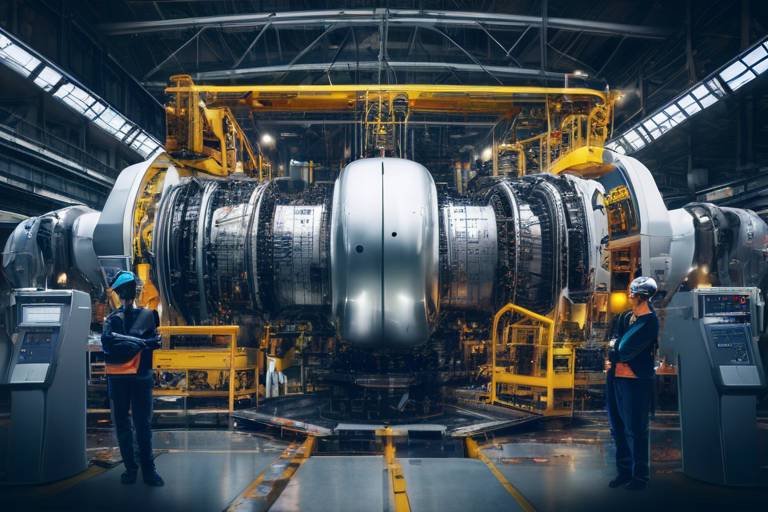How AI is Enhancing Predictive Maintenance
In today’s fast-paced industrial landscape, the integration of artificial intelligence (AI) into predictive maintenance is nothing short of revolutionary. Imagine a world where machines can predict their own breakdowns and alert us before any catastrophic failures occur. Sounds like science fiction, right? Well, it’s happening right now! By leveraging AI, organizations can transition from traditional maintenance strategies, which often rely on reactive or scheduled maintenance, to a more proactive approach that anticipates equipment failures before they happen. This shift not only enhances operational efficiency but also significantly cuts costs associated with unexpected downtimes.
At the heart of this transformation lies the ability of AI to process and analyze vast amounts of data in real-time. Think about it: every machine is equipped with sensors that continuously collect data on performance metrics. This data, when harnessed effectively, can reveal patterns and insights that human operators might overlook. By utilizing machine learning algorithms and advanced data analytics, organizations can create a comprehensive picture of their equipment's health, leading to smarter maintenance decisions.
Moreover, the benefits of AI-driven predictive maintenance extend beyond just cost savings. It also enhances safety and reliability. For instance, in industries like manufacturing and healthcare, a malfunctioning piece of equipment can lead to not only financial losses but also pose serious risks to human safety. By predicting potential failures, AI allows organizations to take action before issues escalate, ensuring a safer working environment. In essence, AI is not just enhancing predictive maintenance; it is reshaping how we think about maintenance itself.
So, what does this mean for the future? As AI technology continues to evolve, we can expect even more sophisticated predictive maintenance solutions that will further optimize resource allocation and extend the lifespan of equipment. The journey of AI in predictive maintenance is just beginning, and the possibilities are endless. Buckle up, because the future of maintenance is looking bright!
- What is predictive maintenance?
Predictive maintenance is a proactive maintenance strategy that uses data analysis tools and techniques to detect anomalies in equipment performance and potential failures before they occur. - How does AI improve predictive maintenance?
AI enhances predictive maintenance by analyzing large datasets, identifying patterns, and making predictions about equipment health, which helps organizations to schedule maintenance activities more effectively. - What industries benefit from AI-driven predictive maintenance?
Industries such as manufacturing, healthcare, energy, and transportation are seeing significant benefits from implementing AI-driven predictive maintenance solutions. - What are the challenges of implementing AI in predictive maintenance?
Challenges include data quality and integration issues, skill gaps in the workforce, and the need for substantial investment in technology and infrastructure.

The Importance of Predictive Maintenance
Understanding predictive maintenance is crucial for organizations aiming to stay ahead in today's fast-paced industrial landscape. Imagine running a marathon without knowing how far you've gone or how much energy you have left. That’s what operating machinery without predictive maintenance feels like—risky and uncertain. Predictive maintenance allows companies to monitor the health of their equipment in real-time, significantly reducing the chances of unexpected failures.
By implementing predictive maintenance strategies, organizations can not only reduce downtime but also optimize their resources effectively. Think of it as a well-timed pit stop during a race; you refuel and check your tires before they wear out, ensuring you can continue racing smoothly. This proactive approach leads to significant cost savings, as maintenance is performed only when necessary rather than on a rigid schedule.
Moreover, predictive maintenance extends the lifespan of equipment. By catching potential issues early on, companies can prevent minor problems from escalating into major failures that require costly repairs or even total replacements. This not only protects the investment made in machinery but also enhances overall operational efficiency. Here are some of the key benefits of predictive maintenance:
- Cost Efficiency: By minimizing unplanned downtime and reducing maintenance costs, organizations can save significantly.
- Resource Optimization: Predictive maintenance allows for better allocation of resources, as maintenance activities can be scheduled during off-peak hours.
- Improved Safety: Regular monitoring and timely interventions reduce the likelihood of accidents caused by equipment failure.
- Enhanced Equipment Lifespan: Addressing issues before they escalate helps in prolonging the life of machinery.
In conclusion, the importance of predictive maintenance cannot be overstated. It transforms the way organizations approach equipment management, moving from a reactive to a proactive stance. By leveraging advanced technologies and data analytics, businesses can ensure their operations run smoothly, efficiently, and safely.

AI Technologies Driving Predictive Maintenance
In today's fast-paced industrial landscape, the integration of artificial intelligence (AI) into predictive maintenance has become a game-changer. By leveraging advanced technologies, organizations can not only foresee equipment failures but also enhance their operational efficiency. The core of this transformation lies in several key AI technologies that work in concert to analyze data and predict maintenance needs before they escalate into costly downtimes.
One of the most significant contributors to this revolution is machine learning. This subset of AI focuses on developing algorithms that allow computers to learn from and make predictions based on data. By examining vast datasets, machine learning algorithms can identify patterns and anomalies that might not be visible to the human eye. This capability is crucial in predictive maintenance, where early detection of potential failures can lead to timely interventions. For example, in a manufacturing setup, machine learning can analyze historical performance data to predict when a machine is likely to fail, allowing maintenance teams to act proactively.
Another essential technology is data analytics. This involves the systematic computational analysis of data sets to uncover hidden insights. When applied to predictive maintenance, data analytics processes information gathered from various sensors and IoT devices embedded in equipment. This real-time data provides organizations with a comprehensive view of their machinery's health, enabling them to make informed decisions about maintenance schedules and resource allocation. The combination of machine learning and data analytics creates a powerful synergy that enhances predictive capabilities.
To illustrate the impact of these technologies, consider the following table that summarizes the key AI technologies driving predictive maintenance and their specific roles:
| AI Technology | Role in Predictive Maintenance |
|---|---|
| Machine Learning | Identifies patterns in historical data to predict equipment failures. |
| Data Analytics | Processes real-time data from sensors for informed decision-making. |
| IoT Integration | Collects data from various devices, enhancing monitoring capabilities. |
| Predictive Algorithms | Utilizes statistical methods to forecast potential equipment issues. |
Moreover, the role of Internet of Things (IoT) cannot be overlooked. IoT devices equipped with sensors continuously gather data on equipment performance, feeding this information into machine learning models and data analytics systems. This continuous flow of data enables organizations to maintain a real-time pulse on their assets, which is invaluable for executing effective predictive maintenance strategies.
In summary, the combination of machine learning, data analytics, and IoT technologies forms a robust framework for predictive maintenance. These AI technologies not only help organizations minimize downtime and reduce maintenance costs but also foster a culture of proactive management. As these technologies continue to evolve, we can expect even greater advances in predictive maintenance, leading to enhanced productivity and operational excellence across various industries.
- What is predictive maintenance? Predictive maintenance is a proactive approach to maintenance that uses data analysis to predict when equipment failures might occur, allowing for timely interventions.
- How does AI improve predictive maintenance? AI enhances predictive maintenance by analyzing large datasets to identify patterns, enabling organizations to predict equipment failures before they happen.
- What are the key technologies used in AI-driven predictive maintenance? Key technologies include machine learning, data analytics, and IoT integration, all of which work together to optimize maintenance strategies.
- What industries benefit from predictive maintenance? Industries such as manufacturing, healthcare, and transportation are significantly benefiting from the implementation of AI-driven predictive maintenance solutions.

Machine Learning Algorithms
When it comes to predictive maintenance, are the unsung heroes that quietly work behind the scenes, transforming raw data into actionable insights. Imagine trying to find a needle in a haystack; that’s what traditional data analysis feels like without the aid of machine learning. These algorithms sift through vast amounts of historical data, identifying patterns that would be nearly impossible for humans to detect. This capability allows organizations to predict equipment failures with remarkable accuracy, ultimately saving time and money.
Machine learning algorithms can be broadly categorized into two types: supervised learning and unsupervised learning. Each plays a unique role in enhancing predictive maintenance strategies. Supervised learning involves training a model on labeled datasets, where the outcome is known. For instance, if we have historical data indicating when a machine failed, we can use this data to train a model to recognize similar patterns in new data. This process helps in making precise predictions about when maintenance should be performed, thus reducing the risk of unexpected equipment failures.
On the other hand, unsupervised learning dives into the unknown. It analyzes unlabeled data to uncover hidden patterns and anomalies. This is particularly useful in predictive maintenance, as it can reveal insights that might not be apparent through traditional analysis. For example, if a machine consistently shows signs of wear but has not yet failed, unsupervised learning can flag this as a potential risk, prompting early intervention before a costly breakdown occurs.
The real magic happens when these algorithms are combined with real-time data from sensors and IoT devices. By continuously learning from new data, machine learning algorithms can adapt and refine their predictions, leading to increasingly accurate maintenance schedules. This not only optimizes resource allocation but also extends the lifespan of equipment, ensuring that organizations can operate at peak efficiency.
To illustrate the effectiveness of machine learning in predictive maintenance, consider the following table that outlines common algorithms used in the field and their applications:
| Algorithm | Application |
|---|---|
| Linear Regression | Predicting time until failure based on historical performance data. |
| Decision Trees | Identifying key factors that lead to equipment failure. |
| Random Forests | Improving prediction accuracy by aggregating multiple decision trees. |
| Neural Networks | Modeling complex relationships in multi-dimensional data for failure prediction. |
In conclusion, machine learning algorithms are revolutionizing the way organizations approach predictive maintenance. By harnessing the power of these algorithms, businesses can not only predict when equipment is likely to fail but also implement proactive strategies that minimize downtime and reduce costs. The ability to analyze historical data, recognize patterns, and adapt to new information makes machine learning an invaluable asset in the ever-evolving landscape of maintenance management.
- What is predictive maintenance? Predictive maintenance is a proactive maintenance strategy that uses data analysis to predict when equipment will fail, allowing for timely interventions.
- How does machine learning enhance predictive maintenance? Machine learning algorithms analyze historical data to identify patterns and predict future equipment failures, optimizing maintenance schedules and reducing downtime.
- What are the benefits of using AI in predictive maintenance? Benefits include reduced maintenance costs, minimized downtime, extended equipment lifespan, and improved operational efficiency.
- What challenges do organizations face when implementing AI for maintenance? Common challenges include data quality issues, integration difficulties, and a shortage of skilled professionals.

Supervised Learning Techniques
Supervised learning techniques are at the heart of many AI-driven predictive maintenance systems. They operate on the principle of learning from labeled datasets, which means that the algorithms are trained on historical data where the outcomes are already known. This approach is akin to having a seasoned mentor guiding a novice; the algorithm learns to predict equipment performance and maintenance needs based on past behavior, much like a student learns from a teacher's examples.
In practice, supervised learning involves feeding the algorithm a wealth of data, including various parameters such as temperature, vibration, and operational hours of equipment. This data is then used to create a model that can forecast future failures or maintenance requirements. For instance, if a particular machine shows signs of overheating before a failure, the model can identify this pattern and alert maintenance teams to take proactive measures. The accuracy of these predictions can lead to significant reductions in unplanned downtime and maintenance costs, ultimately enhancing operational efficiency.
One of the key advantages of supervised learning is its ability to provide precise predictions. By continuously refining the model with new data, organizations can improve the accuracy of their predictions over time. However, the effectiveness of these techniques heavily relies on the quality of the data being used. If the historical data is flawed or incomplete, the predictions will be equally unreliable. Therefore, ensuring high-quality data collection and management is crucial for successful implementation.
To illustrate the impact of supervised learning in predictive maintenance, consider the following table that summarizes its benefits and challenges:
| Benefits | Challenges |
|---|---|
| Accurate predictions of equipment failures | Dependence on high-quality historical data |
| Optimized maintenance schedules | Need for skilled personnel to manage the models |
| Reduced downtime and maintenance costs | Integration with existing systems and processes |
In conclusion, supervised learning techniques are a powerful tool for enhancing predictive maintenance strategies. By leveraging historical data, organizations can not only anticipate equipment failures but also create a culture of proactive maintenance that leads to improved safety and efficiency. As industries continue to embrace these technologies, the potential for AI-driven solutions in predictive maintenance will only grow, paving the way for smarter, more resilient operations.
- What is supervised learning? Supervised learning is a machine learning technique where algorithms are trained on labeled datasets to make predictions based on historical data.
- How does supervised learning benefit predictive maintenance? It enables accurate predictions of equipment failures, optimizes maintenance schedules, and reduces downtime and costs.
- What are the challenges of implementing supervised learning? Challenges include the need for high-quality data, skilled personnel, and integration with existing systems.

Unsupervised Learning Applications
Unsupervised learning applications are revolutionizing the way organizations approach predictive maintenance. Unlike supervised learning, which relies on labeled datasets, unsupervised learning dives into the vast ocean of data without predefined labels, uncovering hidden patterns and insights that might otherwise go unnoticed. This approach is akin to exploring a dark cave with a flashlight; while you may not know what treasures lie within, the light helps reveal the unseen. By analyzing historical data, unsupervised learning can identify anomalies that signal potential equipment issues, enabling proactive maintenance strategies.
One of the most significant advantages of unsupervised learning is its ability to detect outliers in data. For instance, consider a manufacturing plant where machinery operates under varying conditions. By applying unsupervised algorithms, the system can flag any deviations from normal operational behavior, such as unusual vibrations or temperature spikes. These anomalies can indicate impending failures, allowing maintenance teams to intervene before a breakdown occurs, saving both time and money.
Moreover, unsupervised learning can enhance asset management by clustering similar equipment based on their performance metrics. This clustering can help organizations identify which machines require similar maintenance strategies, streamlining the overall maintenance process. For example, if a group of machines shows similar wear patterns, maintenance schedules can be aligned, ensuring that resources are used efficiently and effectively.
To illustrate this further, let's look at a table that summarizes the key applications of unsupervised learning in predictive maintenance:
| Application | Description |
|---|---|
| Anomaly Detection | Identifies unusual patterns in operational data that may indicate potential failures. |
| Clustering | Groups similar equipment based on performance, allowing for tailored maintenance strategies. |
| Root Cause Analysis | Helps uncover underlying issues by analyzing data correlations and patterns. |
In conclusion, the applications of unsupervised learning in predictive maintenance are vast and impactful. By leveraging the power of AI to analyze complex datasets, organizations can not only anticipate equipment failures but also optimize their maintenance practices. This leads to improved operational efficiency and significant cost savings, ultimately enhancing the bottom line. As companies continue to embrace these technologies, the potential for innovation and improvement in predictive maintenance will only grow.
- What is unsupervised learning? Unsupervised learning is a type of machine learning that analyzes data without predefined labels to uncover hidden patterns and insights.
- How does unsupervised learning benefit predictive maintenance? It allows organizations to detect anomalies, cluster similar equipment, and perform root cause analysis, leading to proactive maintenance strategies.
- Can unsupervised learning be used in all industries? Yes, unsupervised learning can be applied across various industries, including manufacturing, healthcare, and energy, to enhance predictive maintenance efforts.

Data Analytics in Maintenance
In the realm of predictive maintenance, data analytics stands out as a game-changer, transforming how organizations monitor and maintain their equipment. Imagine having a crystal ball that allows you to foresee potential issues before they escalate into costly breakdowns. That's precisely what data analytics offers! By processing and interpreting vast amounts of data collected from sensors and IoT devices, organizations can make informed decisions about maintenance activities, leading to enhanced efficiency and reduced downtime.
One of the most compelling aspects of data analytics is its ability to turn raw data into actionable insights. For instance, organizations can analyze historical performance data alongside real-time metrics to identify trends and patterns. This approach not only helps in predicting when equipment is likely to fail but also aids in determining the optimal times for maintenance interventions. The result? A well-timed maintenance schedule that minimizes disruption and maximizes productivity.
Furthermore, data analytics enables organizations to adopt a more proactive maintenance strategy. Instead of waiting for equipment failures to occur, businesses can leverage predictive analytics to anticipate problems and address them before they manifest. This transition from reactive to proactive maintenance can significantly reduce operational costs and extend the lifespan of assets. To illustrate this, consider the following table that highlights the differences between reactive and proactive maintenance strategies:
| Aspect | Reactive Maintenance | Proactive Maintenance |
|---|---|---|
| Approach | Responding to failures | Anticipating and preventing failures |
| Cost Implications | Higher costs due to unplanned downtime | Lower costs through planned maintenance |
| Operational Efficiency | Reduced efficiency due to unexpected breakdowns | Increased efficiency through scheduled maintenance |
| Data Utilization | Minimal data analysis | Extensive data analysis for informed decisions |
Moreover, the integration of machine learning algorithms with data analytics enhances the predictive capabilities even further. These algorithms can sift through historical data to identify anomalies and trends that human analysts might overlook. By learning from past equipment performance, machine learning models can continuously improve their predictions, making maintenance strategies more effective over time.
In conclusion, data analytics is not just a tool; it's an essential component of modern maintenance strategies. By leveraging data insights, organizations can shift towards a more proactive approach, significantly enhancing their operational efficiency and reducing costs. As technology continues to advance, the role of data analytics in predictive maintenance will undoubtedly grow, paving the way for smarter, more resilient operations.
- What is predictive maintenance? Predictive maintenance involves using data analysis tools and techniques to detect anomalies in equipment and potential defects in machinery, allowing organizations to perform maintenance at the right time.
- How does data analytics improve maintenance? Data analytics improves maintenance by providing insights into equipment performance, helping organizations anticipate failures, and optimizing maintenance schedules to reduce downtime.
- What role does machine learning play in predictive maintenance? Machine learning algorithms analyze historical data to identify patterns and predict future equipment failures, enhancing the accuracy of maintenance strategies.
- What industries benefit from predictive maintenance? Various industries, including manufacturing, healthcare, and transportation, benefit significantly from predictive maintenance by minimizing costs and improving operational efficiency.

Real-World Applications of AI in Predictive Maintenance
The impact of artificial intelligence on predictive maintenance is nothing short of revolutionary. Across various sectors, organizations are leveraging AI technologies to not only enhance their maintenance strategies but also to drive significant operational efficiencies. Imagine a factory where machines can predict their own failures before they happen—this is no longer a futuristic dream but a current reality thanks to AI. By integrating AI into their maintenance workflows, businesses are witnessing a transformation that leads to reduced downtime, optimized resource allocation, and ultimately, enhanced profitability.
In the manufacturing sector, for instance, AI-driven predictive maintenance solutions are changing the game. These systems utilize sophisticated algorithms to analyze data from machinery in real-time, allowing for timely interventions. This proactive approach minimizes unexpected breakdowns, which can be incredibly costly. A study revealed that companies implementing AI for predictive maintenance have experienced a 30% reduction in maintenance costs and a 40% decrease in unplanned downtime. Such improvements not only boost productivity but also improve the bottom line.
Another compelling application of AI in predictive maintenance is found in the healthcare industry. Medical equipment is critical for patient care, and any malfunction can have dire consequences. AI technologies enable continuous monitoring of devices such as MRI machines and ventilators, ensuring they operate at optimal levels. By predicting potential failures, healthcare providers can schedule maintenance during off-peak hours, thus avoiding disruptions in patient care. This proactive maintenance strategy not only enhances patient safety but also extends the lifespan of expensive medical equipment.
Moreover, the transportation sector is also tapping into AI's capabilities. Airlines, for example, have started using AI-driven predictive maintenance to monitor aircraft systems. By analyzing data from various sensors, they can predict when parts are likely to fail and replace them before they do. This not only ensures safety but also helps in maintaining flight schedules, thereby enhancing customer satisfaction. The integration of AI in predictive maintenance within the aviation industry has led to a significant reduction in maintenance-related delays, making air travel more reliable than ever.
To illustrate the diverse applications of AI in predictive maintenance, consider the following table that summarizes different industries and their specific use cases:
| Industry | Application | Benefits |
|---|---|---|
| Manufacturing | Real-time machine monitoring | Reduced downtime, lower maintenance costs |
| Healthcare | Monitoring of medical devices | Improved patient safety, extended equipment lifespan |
| Transportation | Aircraft system monitoring | Enhanced safety, improved scheduling |
| Energy | Predictive analysis of turbines | Increased efficiency, reduced operational costs |
As we can see, the benefits of implementing AI in predictive maintenance are vast and varied. The ability to anticipate issues before they escalate into serious problems not only saves money but also enhances the reliability of critical systems. Organizations that embrace these technologies stand to gain a competitive edge in their respective industries, paving the way for a more efficient and productive future.
Q1: What is predictive maintenance?
Predictive maintenance is a proactive maintenance strategy that uses data analysis tools and techniques to detect anomalies in equipment and address potential failures before they occur.
Q2: How does AI enhance predictive maintenance?
AI enhances predictive maintenance by analyzing large volumes of data from sensors and IoT devices to identify patterns and predict equipment failures, allowing organizations to schedule maintenance more effectively.
Q3: What industries benefit from AI-driven predictive maintenance?
Multiple industries benefit from AI-driven predictive maintenance, including manufacturing, healthcare, transportation, and energy, each leveraging AI to improve operational efficiency and reduce costs.
Q4: What are the challenges of implementing AI in predictive maintenance?
Challenges include data quality and integration issues, skill gaps in the workforce, and the need for significant investment in technology and infrastructure.

Manufacturing Sector Innovations
The manufacturing sector is experiencing a remarkable transformation, thanks to the integration of AI-driven predictive maintenance solutions. These innovations are not just about keeping machines running; they are about revolutionizing the entire production process. Imagine a factory where machines can tell you when they need maintenance before they break down. This proactive approach minimizes unplanned downtime, which can be incredibly costly. In fact, studies suggest that unplanned downtime can cost manufacturers up to $260,000 per hour. With AI, manufacturers can avoid these hefty losses and keep production lines moving smoothly.
One of the key innovations in this space is the use of real-time data analytics. By harnessing data from sensors embedded in machinery, manufacturers can monitor equipment performance continuously. This constant stream of data allows for the identification of potential issues before they escalate into major problems. For example, if a machine's vibration levels begin to exceed normal thresholds, AI algorithms can analyze this data and predict when maintenance should occur, thereby preventing a catastrophic failure.
Moreover, AI technologies facilitate the optimization of maintenance schedules. Traditional maintenance practices often rely on set intervals or reactive measures. However, with predictive maintenance powered by AI, organizations can shift to a more dynamic maintenance strategy. This means that maintenance is performed only when necessary, based on the actual condition of the equipment rather than on a rigid timetable. This not only saves time and resources but also extends the lifespan of the machinery.
To illustrate the impact of these innovations, consider the following table that highlights some of the benefits of AI in predictive maintenance within the manufacturing sector:
| Benefit | Description |
|---|---|
| Reduced Downtime | Minimizes unplanned outages by predicting failures before they occur. |
| Cost Savings | Decreases maintenance costs by optimizing schedules and reducing emergency repairs. |
| Increased Productivity | Enhances production efficiency by ensuring machines are operational and functioning optimally. |
| Data-Driven Decisions | Empowers managers to make informed decisions based on real-time insights from equipment data. |
Furthermore, AI's ability to analyze vast amounts of data leads to continuous improvement. As machines operate, they generate data that can be used to refine algorithms and improve predictive accuracy over time. This creates a feedback loop where the system learns from past performance, making it smarter and more efficient. In essence, the manufacturing sector is not just adopting AI; it is embracing a future where machines and humans collaborate to create a more efficient and productive environment.
In conclusion, the innovations brought about by AI in the manufacturing sector are profound. By leveraging predictive maintenance, manufacturers can significantly reduce costs, enhance productivity, and ensure that their operations run smoothly. The future of manufacturing is bright, and AI is at the forefront of this exciting transformation.
- What is predictive maintenance? Predictive maintenance is a proactive approach to maintenance that uses data analysis to predict when equipment will fail, allowing for timely interventions.
- How does AI improve predictive maintenance? AI enhances predictive maintenance by analyzing large datasets to identify patterns and predict equipment failures before they occur.
- What are the benefits of using AI in manufacturing? Benefits include reduced downtime, cost savings, increased productivity, and data-driven decision-making.
- What challenges do organizations face when implementing AI? Challenges include data integration issues, skill shortages, and the need for significant investment in technology.

Healthcare Equipment Monitoring
In the fast-paced world of healthcare, where every second counts, AI technologies are revolutionizing the way we monitor medical equipment. Imagine a scenario where a patient’s life hinges on the functionality of a critical device. With AI-driven monitoring systems, healthcare providers can ensure that equipment is operating optimally and can predict potential failures before they happen. This proactive approach not only enhances patient safety but also improves the overall quality of care.
AI systems utilize data from various sources, including sensors and Internet of Things (IoT) devices, to continuously track the performance of medical equipment. By analyzing this data in real-time, these systems can identify anomalies that may indicate a malfunction. For instance, if a heart monitor starts showing irregular readings, the AI can alert medical staff immediately, allowing for swift intervention. This capability is crucial in preventing equipment-related incidents that could jeopardize patient health.
Moreover, the integration of AI in healthcare equipment monitoring leads to significant cost savings. By predicting when a device is likely to fail, healthcare facilities can schedule maintenance during off-peak hours, thus minimizing downtime and avoiding expensive emergency repairs. A
| Aspect | Before AI Implementation | After AI Implementation |
|---|---|---|
| Average Downtime | 10 hours/month | 2 hours/month |
| Emergency Repairs Cost | $50,000/year | $10,000/year |
| Patient Safety Incidents | 5 incidents/year | 1 incident/year |
In addition to improving safety and reducing costs, AI monitoring systems also enhance compliance with regulatory standards. Healthcare facilities must adhere to strict guidelines regarding equipment performance and maintenance. AI helps ensure that these standards are consistently met, thereby reducing the risk of penalties and enhancing the institution's reputation.
However, implementing AI technologies for equipment monitoring is not without its challenges. Facilities must invest in the right infrastructure and ensure that their staff is adequately trained to use these systems. Despite these hurdles, the benefits of AI in healthcare equipment monitoring are undeniable. As technology continues to advance, we can expect even more sophisticated solutions that will further enhance patient care and operational efficiency.
- What types of medical equipment can be monitored using AI?
AI can be applied to a wide range of medical devices, including imaging machines, patient monitors, infusion pumps, and ventilators.
- How does AI predict equipment failures?
AI analyzes historical performance data and real-time sensor readings to identify patterns and anomalies that precede equipment failures.
- What are the main benefits of AI in healthcare?
Key benefits include improved patient safety, reduced downtime, cost savings, and enhanced regulatory compliance.
- Are there any risks associated with using AI in healthcare?
Potential risks include data privacy concerns, reliance on technology, and the need for skilled personnel to manage these systems.

Challenges in Implementing AI for Maintenance
Implementing AI for predictive maintenance is not all sunshine and rainbows; there are several challenges that organizations face along the way. For starters, the integration of AI systems into existing maintenance frameworks can be a daunting task. Many companies struggle with data integration issues, where disparate data sources fail to communicate effectively. Imagine trying to piece together a jigsaw puzzle with missing pieces; that’s what poor data integration feels like. If the data isn’t accurate or timely, the predictions made by AI can lead to more harm than good, resulting in costly downtime or unnecessary maintenance.
Moreover, there’s the pressing issue of data quality. High-quality data is the bedrock of effective predictive maintenance. Organizations often find themselves grappling with incomplete, inconsistent, or outdated data, which can skew results and lead to misguided maintenance strategies. To put it simply, if the data is rubbish, the insights are likely to be rubbish too. Companies need to invest in robust data collection and management systems to ensure that the information fed into AI algorithms is reliable and actionable.
Another significant barrier is the skill gap in the workforce. While AI technologies promise to revolutionize maintenance practices, there’s a shortage of skilled professionals who can implement and manage these systems. This gap creates a bottleneck effect, where organizations may have the technology but lack the expertise to harness its full potential. It’s like having a high-performance sports car but not knowing how to drive it. Companies must consider investing in training programs or collaborating with educational institutions to build a workforce that is well-versed in AI technologies.
Lastly, the financial investment required for adopting AI solutions can be substantial. Organizations often face the dilemma of whether to allocate funds for AI technologies or continue with traditional maintenance practices. This decision can be particularly challenging for small to medium-sized enterprises (SMEs) that may not have the capital to invest in advanced technologies. It’s essential for organizations to weigh the long-term benefits of predictive maintenance against the upfront costs. After all, the right investment can lead to significant savings in the long run.
In summary, while the benefits of AI-driven predictive maintenance are compelling, organizations must navigate a series of challenges that include data quality and integration, skill shortages, and financial constraints. Addressing these challenges head-on will be crucial for companies looking to leverage AI for predictive maintenance effectively.
- What is predictive maintenance? Predictive maintenance is a proactive approach that uses data analysis tools and techniques to detect anomalies in equipment operation and potential failures, allowing maintenance to be performed just in time.
- How does AI enhance predictive maintenance? AI enhances predictive maintenance by analyzing vast amounts of data to identify patterns, predict equipment failures, and optimize maintenance schedules, ultimately reducing downtime and costs.
- What are the main challenges in implementing AI for predictive maintenance? The main challenges include data integration issues, data quality concerns, skill gaps in the workforce, and the need for substantial financial investment.
- Is AI in predictive maintenance only beneficial for large companies? No, while larger organizations may have more resources, small and medium-sized enterprises can also benefit significantly from AI-driven predictive maintenance by optimizing their operations and reducing costs.

Data Quality and Integration
In the realm of predictive maintenance, the significance of data quality and integration cannot be overstated. Imagine trying to predict the weather with outdated or inaccurate data; the results would be unreliable at best. Similarly, in predictive maintenance, if the data fed into AI systems is flawed or inconsistent, the predictions can lead to disastrous consequences, such as unexpected equipment failures or unnecessary maintenance costs. To truly harness the power of AI, organizations must prioritize the integrity and seamless integration of their data sources.
Data quality encompasses several factors, including accuracy, completeness, and timeliness. Each of these elements plays a crucial role in ensuring that predictive maintenance algorithms function optimally. For instance, if sensor data is inaccurate due to calibration issues, the AI may predict a failure that isn’t imminent, leading to unnecessary downtime. Conversely, if data is incomplete, critical insights may be missed, resulting in missed opportunities for proactive maintenance.
Integration is equally important. Organizations often operate with data silos, where information is trapped within specific departments or systems. This lack of integration can prevent a holistic view of equipment performance. To illustrate, consider a manufacturing plant where the maintenance team relies on data from machines, but the production team uses a different system to track operational metrics. Without proper integration, the maintenance team might overlook a critical performance issue that could indicate a looming failure. Therefore, breaking down these silos is essential for effective predictive maintenance.
To address these challenges, organizations can implement several strategies:
- Data Governance: Establishing clear policies and procedures for data management ensures that data quality is maintained across the board.
- Investing in Integration Tools: Utilizing advanced integration platforms can help unify disparate data sources, providing a comprehensive view of equipment performance.
- Regular Audits: Conducting periodic audits of data quality can help identify and rectify issues before they impact predictive maintenance efforts.
In conclusion, achieving high data quality and seamless integration is paramount for the success of AI-driven predictive maintenance. Organizations that invest in these areas will not only enhance their predictive capabilities but also improve operational efficiencies, ultimately leading to significant cost savings and reduced downtime.
- What is predictive maintenance?
Predictive maintenance is a proactive approach that uses data analysis tools and techniques to detect anomalies in equipment and predict failures before they occur. - How does AI improve predictive maintenance?
AI enhances predictive maintenance by analyzing vast amounts of data to identify patterns and predict equipment failures, enabling timely interventions and optimized maintenance schedules. - What are the challenges in implementing AI for predictive maintenance?
Challenges include ensuring data quality, integrating data from various sources, addressing skill gaps in the workforce, and the need for significant investment in technology.

Skill Gaps in the Workforce
The integration of artificial intelligence (AI) into predictive maintenance is a game changer, but it brings along a significant hurdle: . As organizations strive to harness the full potential of AI technologies, the demand for skilled professionals who can implement and manage these complex systems is rapidly increasing. Unfortunately, there's a noticeable shortage of individuals equipped with the necessary expertise, which can hinder the effectiveness of predictive maintenance initiatives.
Many companies find themselves in a bind—while they have the technology at their disposal, they lack the personnel who can effectively utilize it. This scenario is akin to owning a high-performance sports car but not having a qualified driver to take it for a spin. The advanced algorithms and machine learning models that underpin predictive maintenance require a deep understanding of both the technology itself and the specific operational contexts in which they are applied. Without this knowledge, organizations risk underutilizing their AI investments.
Moreover, the challenge is not just about finding individuals with the right technical skills. There is also a pressing need for professionals who can bridge the gap between IT and operational technology (OT). This means that organizations need to cultivate a workforce that understands how AI intersects with the physical equipment and processes they manage. In many cases, this requires a combination of training existing staff and hiring new talent, both of which can be resource-intensive.
To tackle these skill gaps, companies are exploring various strategies, such as:
- Upskilling Current Employees: Providing training programs that focus on AI technologies, data analytics, and predictive maintenance practices can empower existing staff to adapt to new roles.
- Collaborating with Educational Institutions: Partnering with universities and technical schools to develop curricula that align with industry needs can help create a pipeline of skilled workers.
- Investing in Continuous Learning: Encouraging a culture of continuous education and professional development can keep the workforce updated with the latest advancements in AI and predictive maintenance.
Addressing these skill gaps is not merely a matter of filling positions; it's about fostering a culture that embraces technology and innovation. As organizations invest in their workforce, they not only enhance their predictive maintenance capabilities but also position themselves competitively in a rapidly evolving market. The future of predictive maintenance relies heavily on a skilled workforce that can navigate the complexities of AI, ensuring that organizations can maximize their operational efficiency and minimize downtime.
Q1: What are the key skills needed for predictive maintenance?
A1: Key skills include data analysis, machine learning, understanding of IoT devices, and knowledge of operational technology.
Q2: How can organizations upskill their workforce?
A2: Organizations can provide training programs, collaborate with educational institutions, and promote continuous learning opportunities.
Q3: Why is it important to bridge the skill gap in predictive maintenance?
A3: Bridging the skill gap is crucial for effectively utilizing AI technologies, maximizing operational efficiency, and minimizing equipment downtime.

The Future of AI in Predictive Maintenance
The future of AI in predictive maintenance is not just bright; it's practically dazzling! As technology continues to evolve at an unprecedented pace, we can expect to see a surge in innovations that will further enhance the capabilities of predictive maintenance systems. Imagine a world where machines not only predict their own failures but also communicate with each other to optimize maintenance schedules. Sounds like science fiction? Well, it’s becoming a reality!
One of the most exciting prospects is the integration of advanced machine learning algorithms that will allow predictive maintenance systems to learn from new data continuously. Instead of relying solely on historical data, these systems will adapt in real-time, improving their accuracy and efficiency. This means that organizations can expect fewer unexpected breakdowns, leading to smoother operations and significant cost savings.
Moreover, the advent of 5G technology will revolutionize how data is transmitted from machines to maintenance systems. With lightning-fast connectivity, real-time data analytics will become the norm. This will enable organizations to monitor equipment performance instantaneously, allowing for quicker decision-making and even more proactive maintenance strategies. Picture this: a factory floor where every machine is connected, sharing data seamlessly, and alerting technicians to potential issues before they escalate. This level of connectivity will not only enhance operational efficiency but also foster a culture of continuous improvement.
As we look to the future, the role of Internet of Things (IoT) devices in predictive maintenance cannot be overstated. With an increasing number of sensors being embedded in machinery, the amount of data available for analysis will skyrocket. This influx of data will provide organizations with deeper insights into their equipment's health, leading to more informed maintenance decisions. For instance, a manufacturing plant could utilize IoT sensors to monitor vibration levels in machinery, which can indicate wear and tear. By analyzing this data, maintenance teams can schedule repairs before a breakdown occurs, thereby minimizing downtime.
However, it’s not just about the technology; the human element remains crucial. As AI systems become more sophisticated, there will be a growing need for skilled professionals who can interpret the data and make strategic decisions based on the insights provided. Organizations will need to invest in training their workforce to ensure they can leverage these advanced technologies effectively. In fact, the future of predictive maintenance will likely see a shift in job roles, with more emphasis on data analysts and AI specialists who can bridge the gap between technology and operational needs.
In summary, the future of AI in predictive maintenance is poised for remarkable growth. With advancements in machine learning, 5G connectivity, and IoT, organizations can look forward to a landscape where predictive maintenance is not just a tool but a strategic advantage. As we embrace these changes, the potential for improved operational efficiency, reduced costs, and enhanced safety in the workplace is limitless.
- What is predictive maintenance? Predictive maintenance is a strategy that uses data analysis tools and techniques to detect anomalies in equipment operation and potential defects in equipment before they occur.
- How does AI enhance predictive maintenance? AI enhances predictive maintenance by analyzing vast amounts of data to identify patterns and predict equipment failures, allowing for timely maintenance interventions.
- What industries benefit from AI-driven predictive maintenance? Many industries, including manufacturing, healthcare, and transportation, benefit from AI-driven predictive maintenance by reducing downtime and improving operational efficiency.
- What challenges do organizations face when implementing AI for predictive maintenance? Common challenges include data integration issues, skill shortages, and the need for significant investment in technology and infrastructure.
Frequently Asked Questions
- What is predictive maintenance?
Predictive maintenance is a proactive approach that uses data analysis and AI technologies to predict when equipment failures might occur. By monitoring equipment performance and analyzing historical data, organizations can schedule maintenance activities before issues arise, reducing downtime and saving costs.
- How does AI enhance predictive maintenance?
AI enhances predictive maintenance by utilizing machine learning algorithms and data analytics to process large amounts of data from sensors and IoT devices. This allows for accurate predictions of equipment failures, enabling organizations to optimize maintenance schedules and improve operational efficiency.
- What are the main AI technologies used in predictive maintenance?
The main AI technologies used in predictive maintenance include machine learning, data analytics, and IoT integration. Machine learning algorithms help identify patterns in historical data, while data analytics processes real-time data to provide actionable insights for maintenance strategies.
- What industries benefit from AI-driven predictive maintenance?
Numerous industries benefit from AI-driven predictive maintenance, including manufacturing, healthcare, transportation, and energy. Each of these sectors utilizes AI to minimize equipment downtime, enhance safety, and improve overall efficiency in operations.
- What challenges do organizations face when implementing AI for maintenance?
Organizations face several challenges when implementing AI for predictive maintenance, including data quality and integration issues, skill gaps in the workforce, and the need for significant investment in technology and infrastructure. Addressing these challenges is crucial for successful adoption.
- What is the future of AI in predictive maintenance?
The future of AI in predictive maintenance looks bright, with ongoing advancements in artificial intelligence and machine learning expected to further enhance predictive capabilities. As technology evolves, organizations will likely see even greater efficiencies and cost savings in their maintenance strategies.



















